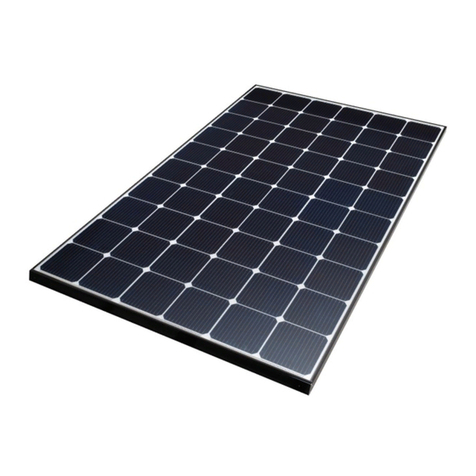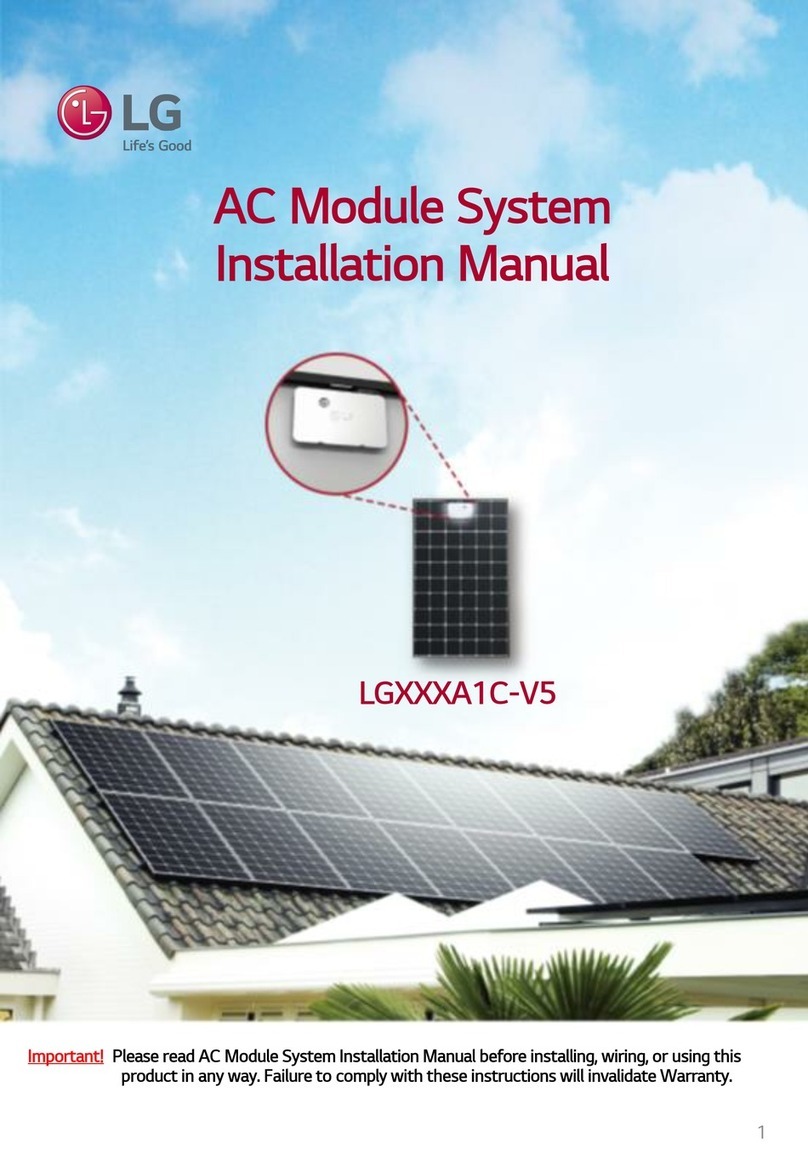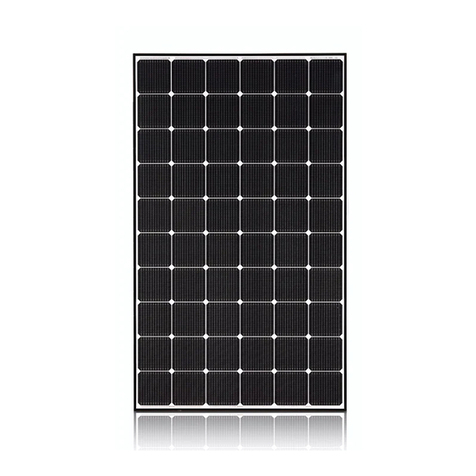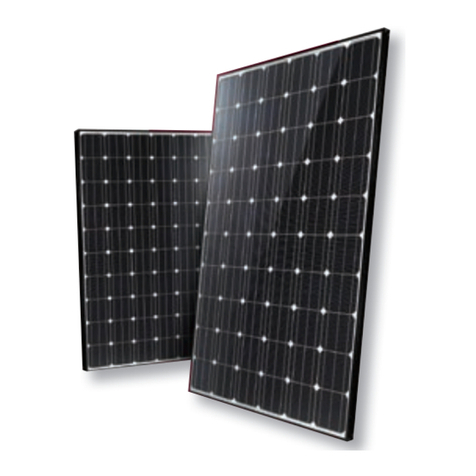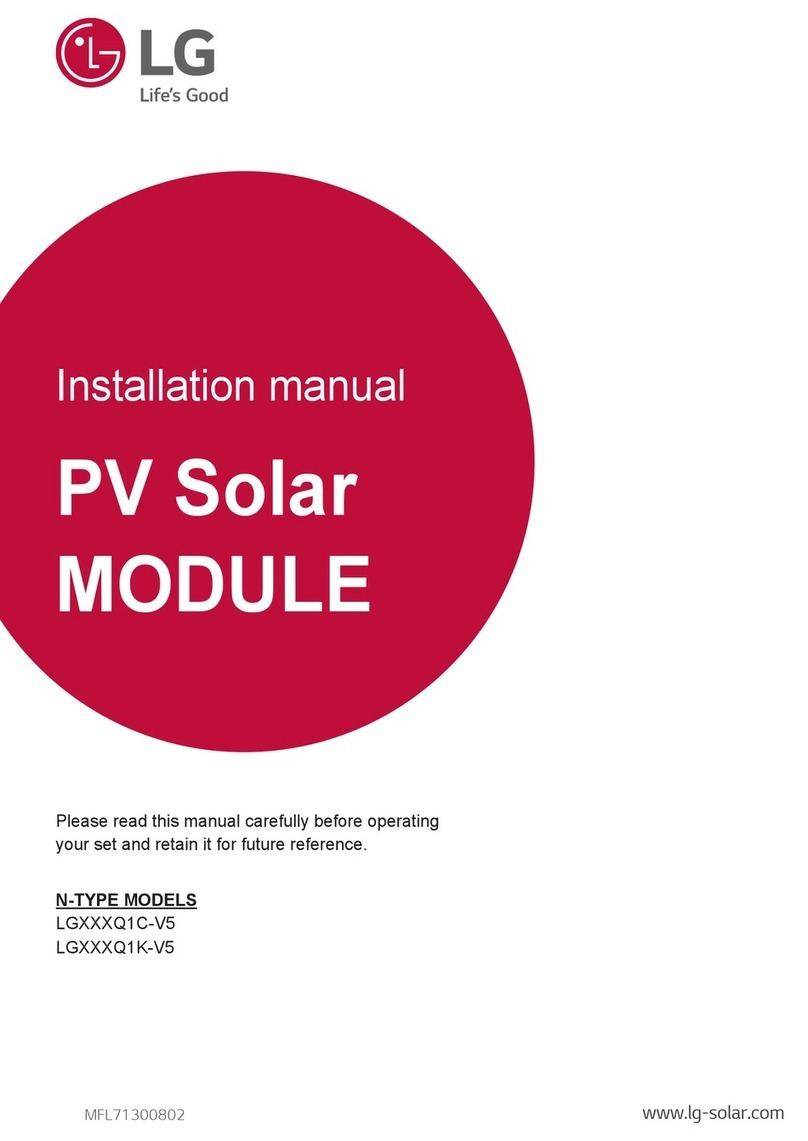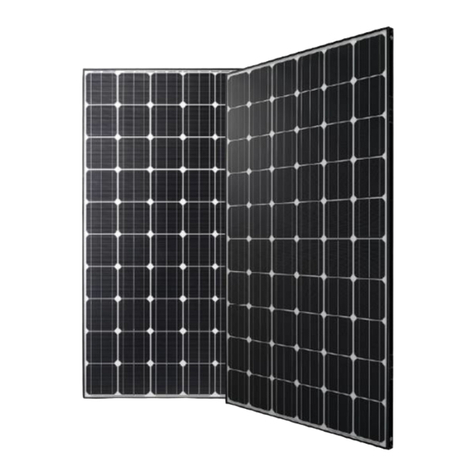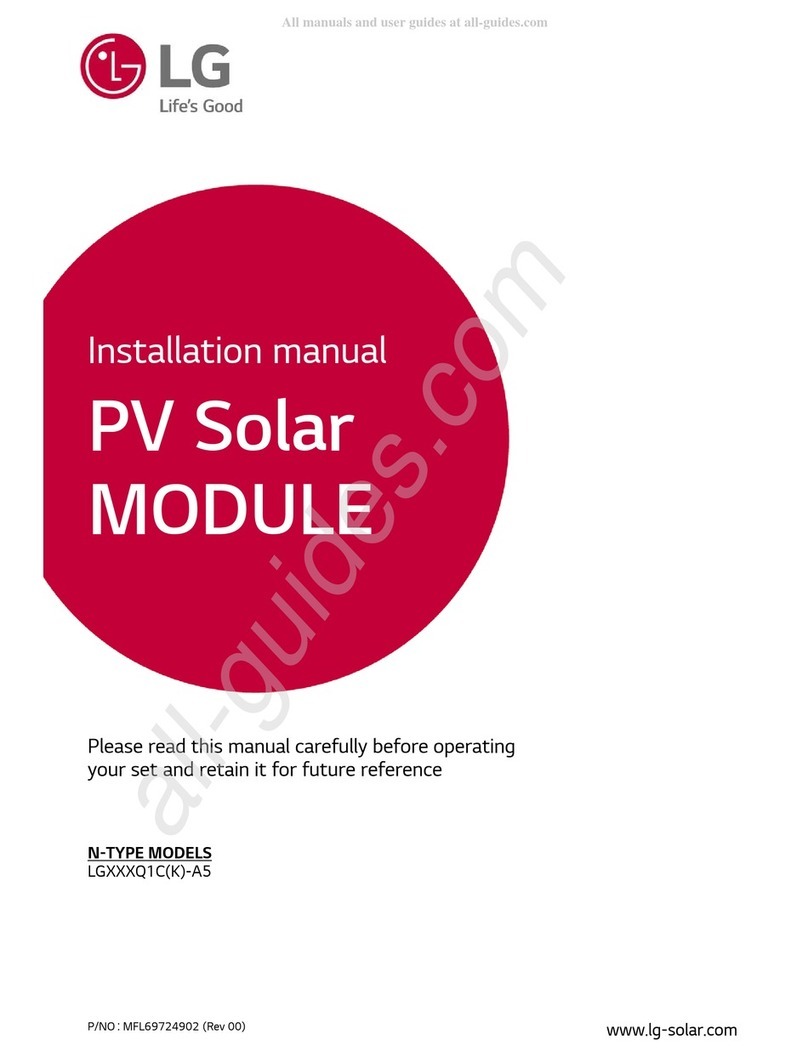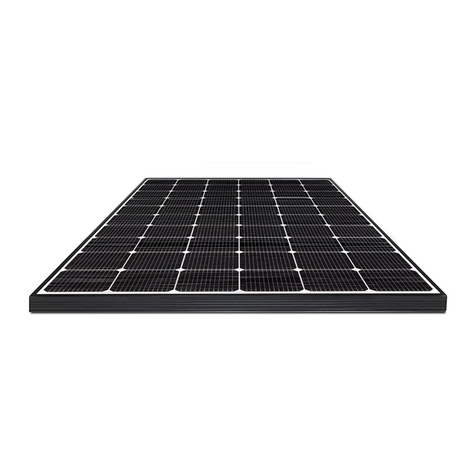
Parallel Connection
•The solar modules may be combined in parallelto
producethe desiredcurrent output.
•When modules are combined in parallel,the total
current is equalto the sum of currents from each
module.
•The voltage of eachmodule connected in parallel
should be the same.
•When connecting pluralstrings of modules in parallel e
very series string or solar module must be fused prior t
ocombining with other strings.
•Abide with allapplicable federal, state, andlocalcodes
for additionalfusing requirements andlimitations on the
maximum number of solar modules in parallel.
•Maximum series fuse rating is refer to “Product
Specifications; page11”.
•Parallel configuration is notlimited if propermeasures
are taken to blockthe reverse current flow, e.g. fuses f
or the protection of the module andcables from over-
current for prevention of unbalancedstring voltage.
•LG Electronics recommends to take blocking diode
for prevention of unbalanced string voltage.
•The reverse current flow in the string may be caused by
amoduleshortcircuit,incorrectwiring,shadow,etc.
•Blocking diodes must have :
1) VRRM(Repetitive Peak Reverse Voltage) :
1.5times of maximum system voltage
2) IF (Average Forward Current) :
2times of Isc (PV module short circuit current)
※It is selected in consideration of the thermal
characteristics of the diode, and it is recommended
to use acomponent of 30mA or less for IRRM
(Repetitive Peak Reverse Current, max).
•Amultiplying factor is required for increasedoutput
of the PV modules. Under normalconditions, aPV
module is likely to experienceconditions that produce
more current and/or voltage than reported at standard
test conditions. The requirements of the National Elect
rical Code(NEC) in Article 690shall be followed to ad
dressthese increasedoutputs.
The values of Isc andVoc marked on this PV module
should be multiplied by a factor of 125%when determ
iningcomponent voltage ratings, conductor ampacitie
s, fuse sizes, andsize of controls to the PV output.
•Depending on nationaldirectives, additionalsafety fact
ors might be applicable for over current protection.
7
General Wiring
•LGElectronics recommends that allwiring be double
insulated with aminimum rating of 90°C(194°F).
•All wiring should useaflexible copper (Cu) conductor.
•The minimum size should be determined by the
applicable codes.
•LGElectronics recommends asize no smallerthan
4mm2.
Earth Grounding
•All workmust be conducted in conformance with all
Federal, State, andlocalcodes andstandards.
•Grounding worksshould be performed by an authoriz
ed installer for the safety andmaintenance of the syst
em in accordancewith allnational, state and localele
ctricalcodes andregulations andstandards.
•Specific information on the solar module dimensions a
nd location of groundingholes is provided in “Product S
pecifications”.
•One M4 stainless steel bolt, onenut, onespring wash
er, two flat washers, onecup washer, onestar washe
r and 12 AWG Cu wiresare recommended per mount
ing hole.
•Where common groundinghardware(nut, bolts, washe
rs) isusedto attach alisted groundingdevice, the attac
hment must be made in conformance with the groundi
ng devicemanufacturer’s instructions.
•All hardwareshould be consist of corrosion resistant
material such as stainless steel.
•There is an earth hole on the edge of the module f
rame. Usingthis hole, an earth conductor andthe
solar module frame may be recommended to be c
onnected andearthed as the belowdrawing.
•All screws andnutsshall be tightened to atorque of
4~5 N∙m.
•To prevent electric shock andfire, aprotective ground must
be done on the frames of solar modules andarrays althoug
hthe solar modules from LGmeet the conditions of safety
class II. The nationaldirectives must be respected.
•Bonding points to groundshould be tight, secure andfree fro
mcorrosion. (Maintenance is especially important inareas wit
hhigh levels of salt in the atmosphere, such as coastal areas
andthe surrounding seas.)
Module frame
Bolt
Flat washer
Star washer
Cupwasher
Grounding wire
Flat washer Spr
ing washer
Nut
Parallel connection for more current
…………
+ -
+-+ --
+-
+


